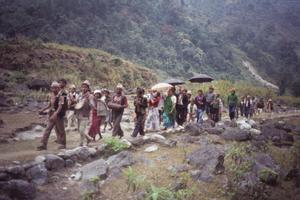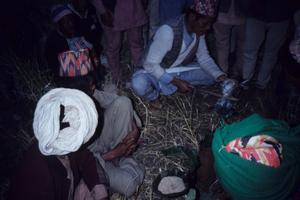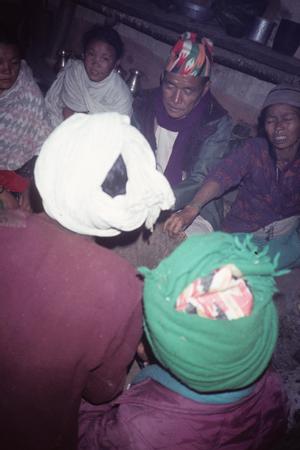Mewahang wedding in Tamku
Basically the wedding ceremonies among the Mewahang Rai fall in two parts: the Small Wedding (sāno bihā) and the Big Wedding (ṭhulo bihā). The first acknowleges certain rights with respect to the woman, such as the full legitimacy of their offspring; further, the conditions for divorce are defined for both side. The woman, however, remains a member of her paternal clan, which continues to take responsibility for her acts, and with which she maintains close ties. The Big Wedding usually takes place many years later, after children are born and a house was built. Only then the marriage process is completed.
This is a documentation of a Small Wedding of a young man from Kolba/Tamku and his bride from the other side of the Sankhuwa River, the village of Yangyip. An essential ritual act of the Small Wedding is the sāinu pherāunu, during which, with displays of mutual respect, the forms of address consisting of the new (affinal) kinship terms are “introduced” between the bridegroom and the woman's near relations. But what is of major significance for the legal recognition of the marriage is the ritual dialogue between two village elders in the bride's house (ideally, but not necessarily they belong to the kalliyā). This dialogue, which is later conducted in a similar manner during the Big Wedding, is here called bāgdattā N (< vāgdattā Skt “’given by word of mouth,’ promised,... a betrothed virgin,” Monier-Williams 1899: 936). This term thus implies a kind of betrothal, the making of a promise.
For details, see: Gaenszle, Martin. 2000. Origins and migrations: kinship, mythology and ethnic identity among the Mewahang Rai of East Nepal. Kathmandu: Mandala Book Point & The Mountain Institute, pp. 169-182.



















